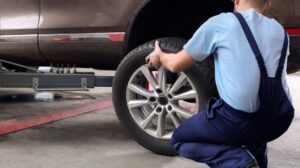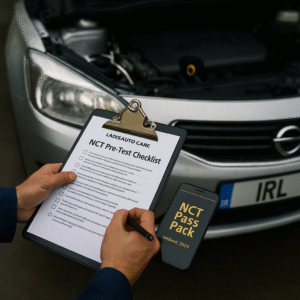“How do I fix my car’s check engine light?”
“What to do when your engine light comes on?”
Common tools needed for DIY car repairs.
How Mechanics Can Use AI-Powered Tools to Improve Garage Efficiency
Take Control of Your Car Repairs
Dealing with car troubles doesn’t always mean a costly trip to the mechanic. Many common vehicle issues can be diagnosed and resolved at home with the right tools and guidance. Whether it’s an unexpected check engine light or a weak battery, AutoAdvisor Online provides step-by-step solutions to empower car owners to take charge of their repairs.
In this guide, we’ll cover the top five DIY car repairs that you can easily fix using AutoAdvisor’s advanced car diagnostic tools—saving time, stress, and money.
Check Engine Light: What Does It Mean and How to Fix It?
“How do I fix my car’s check engine light?”
The check engine light can be alarming, but it’s often a sign of minor issues like a loose gas cap or faulty sensor. With AutoAdvisor’s diagnostic tool, you can:
- Input the problem: Describe the symptoms or error code.
- Receive instant results: The tool pinpoints the likely cause and provides actionable steps.
- Fix the issue: Tighten the gas cap, replace a spark plug, or check sensor connections.
Pro Tip: Ignoring the check engine light can lead to more severe problems. Use AutoAdvisor to troubleshoot and resolve issues before they escalate.
Dead or Weak Car Battery: How to Troubleshoot and Fix
A dead battery is one of the most common car issues, especially during colder months. Here’s how AutoAdvisor can help:
Diagnosis: Input symptoms like slow engine cranking or dim lights to confirm battery failure.
Step-by-Step Fix:
Use a multimeter to test the battery voltage.
If voltage is below 12.4 volts, recharge or replace the battery.
Check for corrosion on battery terminals and clean them with baking soda and water.
DIY Tip: Keep jumper cables or a portable battery charger handy for emergencies.
Oil Change: Extending Your Engine’s Life
Regular oil changes are vital to maintaining engine health. Skipping them can cause overheating and long-term damage. Here’s how you can handle it at home:
- Gather tools: Wrench, oil pan, funnel, and new oil filter.
- Use AutoAdvisor: Get recommendations for the right oil type and change frequency for your car.
- Steps to DIY:
- Drain old oil.
- Replace the oil filter.
- Refill with fresh oil and check levels with the dipstick.
Did You Know? Many modern vehicles can go 5,000–7,500 miles between oil changes, but always check your manufacturer’s recommendations.
Squeaky Brakes: Diagnosing and Fixing the Noise
Brake issues can be both annoying and unsafe. Common causes include worn-out brake pads or dust buildup. Here’s how to fix it:
- Diagnose with AutoAdvisor: Confirm the root cause, whether it’s worn pads or rotor damage.
- DIY Fix:
- Remove the wheels to inspect brake pads.
- Replace worn pads with new ones.
- Clean brake components to remove debris and dust buildup.
Safety Tip: If brakes squeal after DIY fixes, have a professional inspect the rotors for wear.
Engine Overheating: Cooling System Quick Fixes
An overheating engine is usually caused by low coolant levels or a failing radiator. Here’s a simple approach:
Diagnose with Auto Advisor: Input the overheating symptoms to get instant guidance.
DIY Fix:
Check coolant levels and top up if needed.
Inspect hoses and radiator for leaks.
Replace a faulty thermostat or radiator cap if required.
Quick Tip: Never open the radiator cap while the engine is hot—it can cause serious burns.
Tools You Need for DIY Car Repairs
To successfully troubleshoot and fix car issues, keep these tools in your garage:
- OBD2 Scanner: Reads error codes from your car’s computer.
- Multimeter: Measures battery voltage and electrical issues.
- Wrench Set & Screwdrivers: Essential for oil changes, brake work, and general repairs.
- Oil Pan & Funnel: For clean oil changes.
- Jumper Cables: For dealing with a dead battery.
With Auto Advisor’s detailed repair instructions, these tools are all you need to tackle most common car problems like a pro.
Save Time and Money with AutoAdvisor
Thanks to AutoAdvisor Online’s car diagnostic tools, you don’t need to be a mechanic to handle common car issues. By diagnosing problems like check engine lights, battery failures, or brake noises at home, you can:
- Save on expensive repair bills.
- Avoid unnecessary trips to the mechanic.
- Build your confidence in DIY car repairs.
Ready to take control of your car maintenance? Visit AutoAdvisor Online and start diagnosing your vehicle today!
Tags
DIY car repairs, Car diagnostic tools, Fix car issues, How do I fix my car’s check engine light?,





